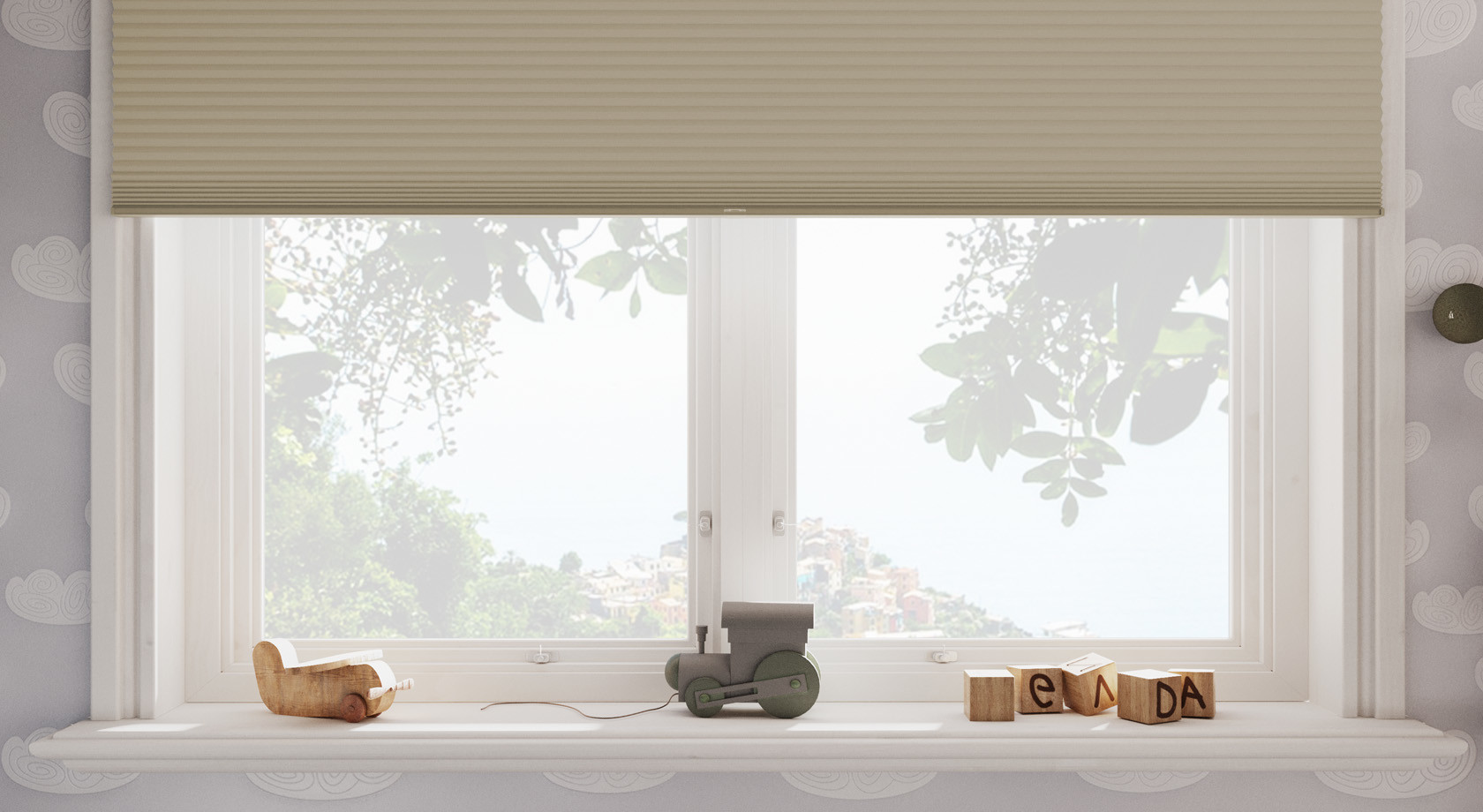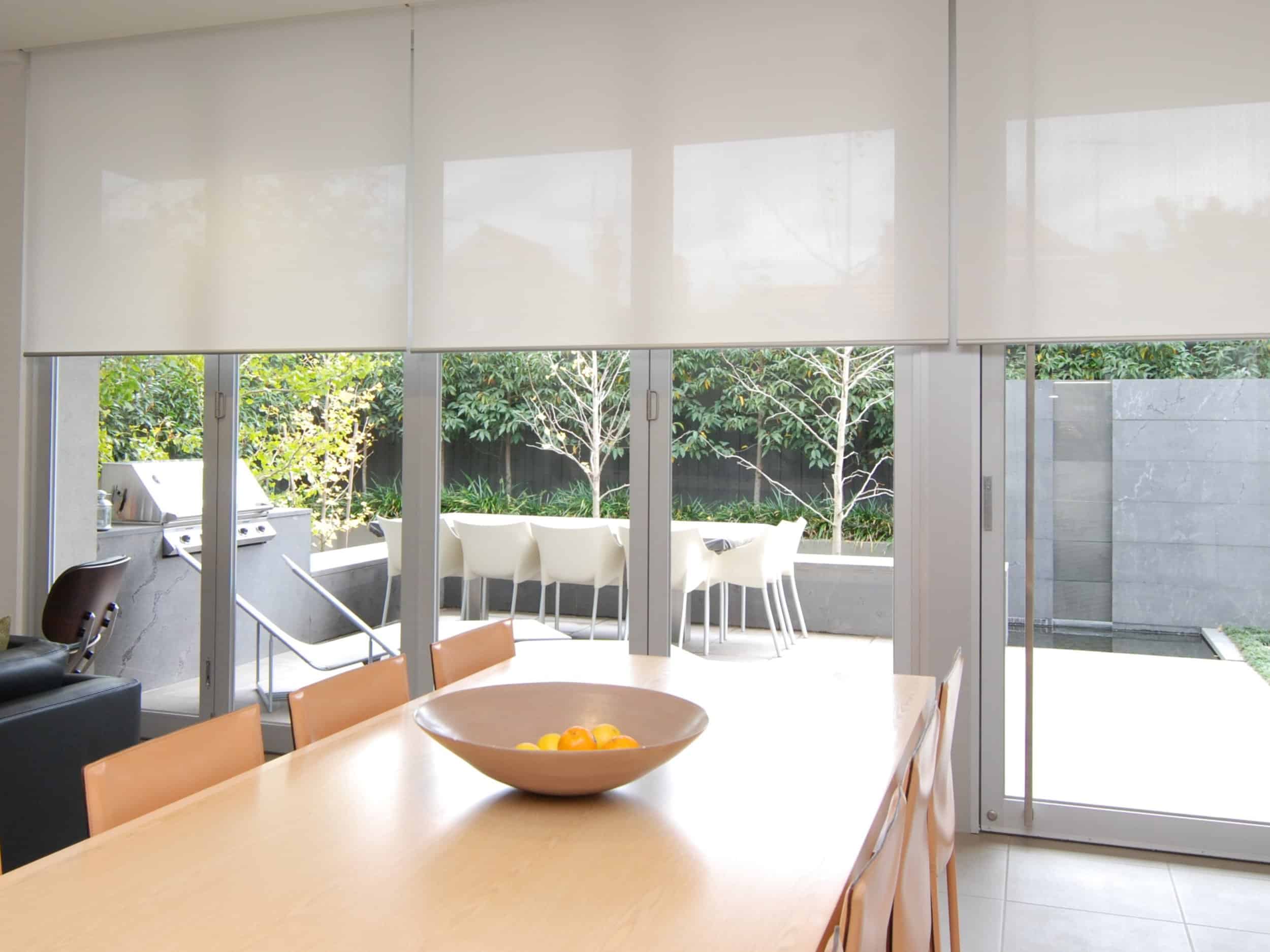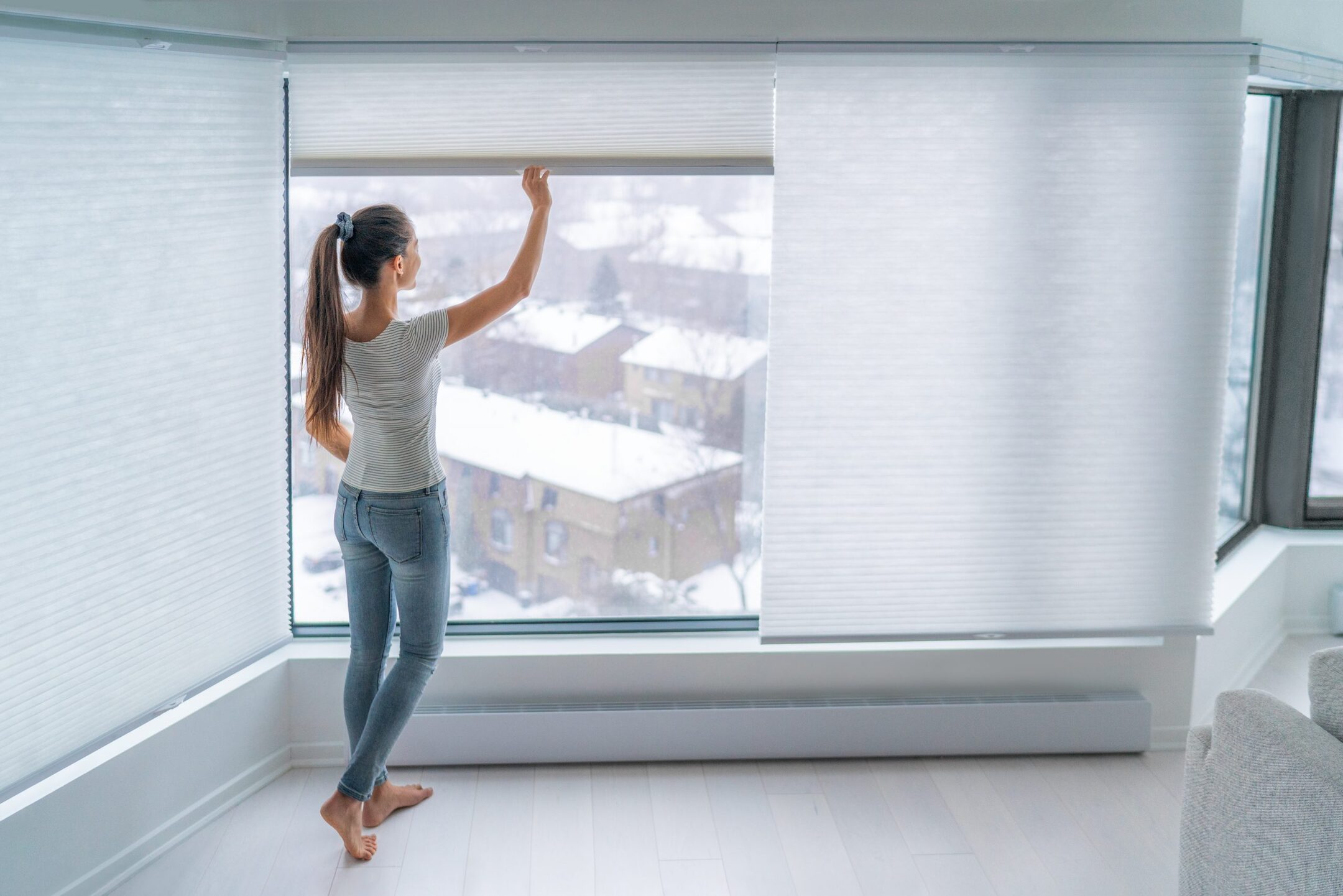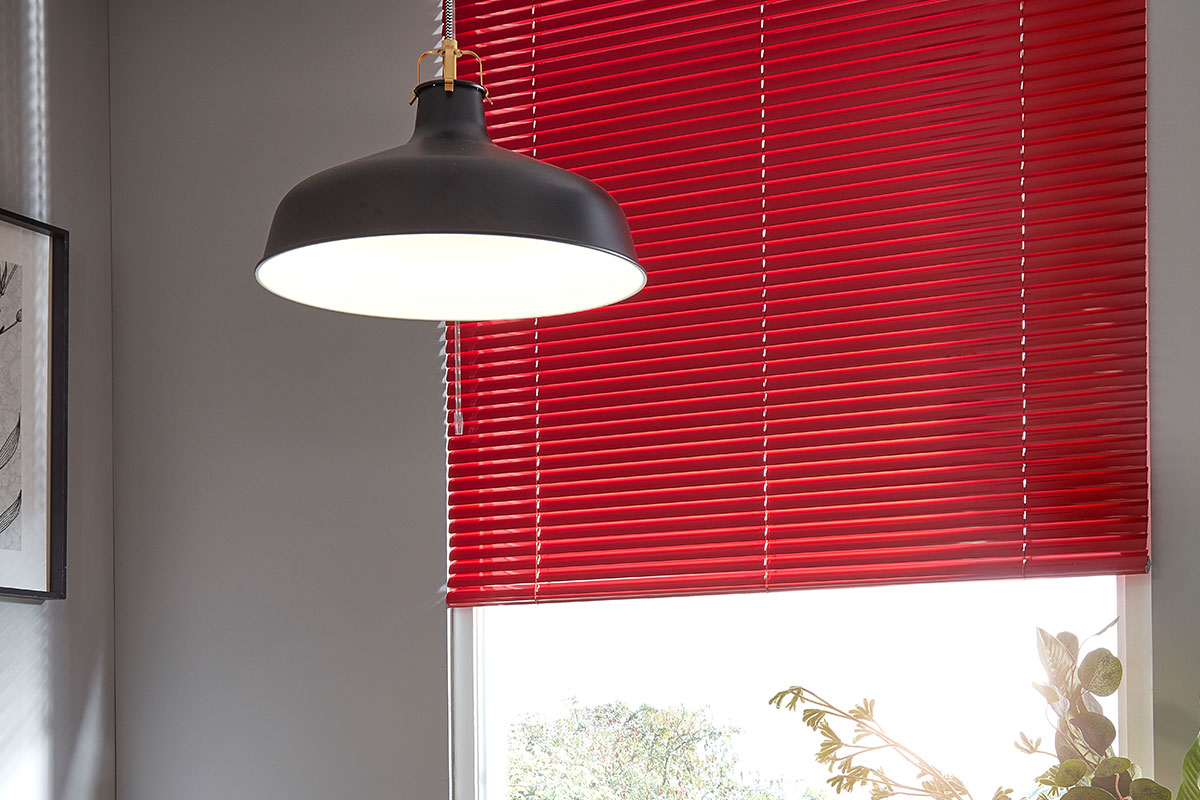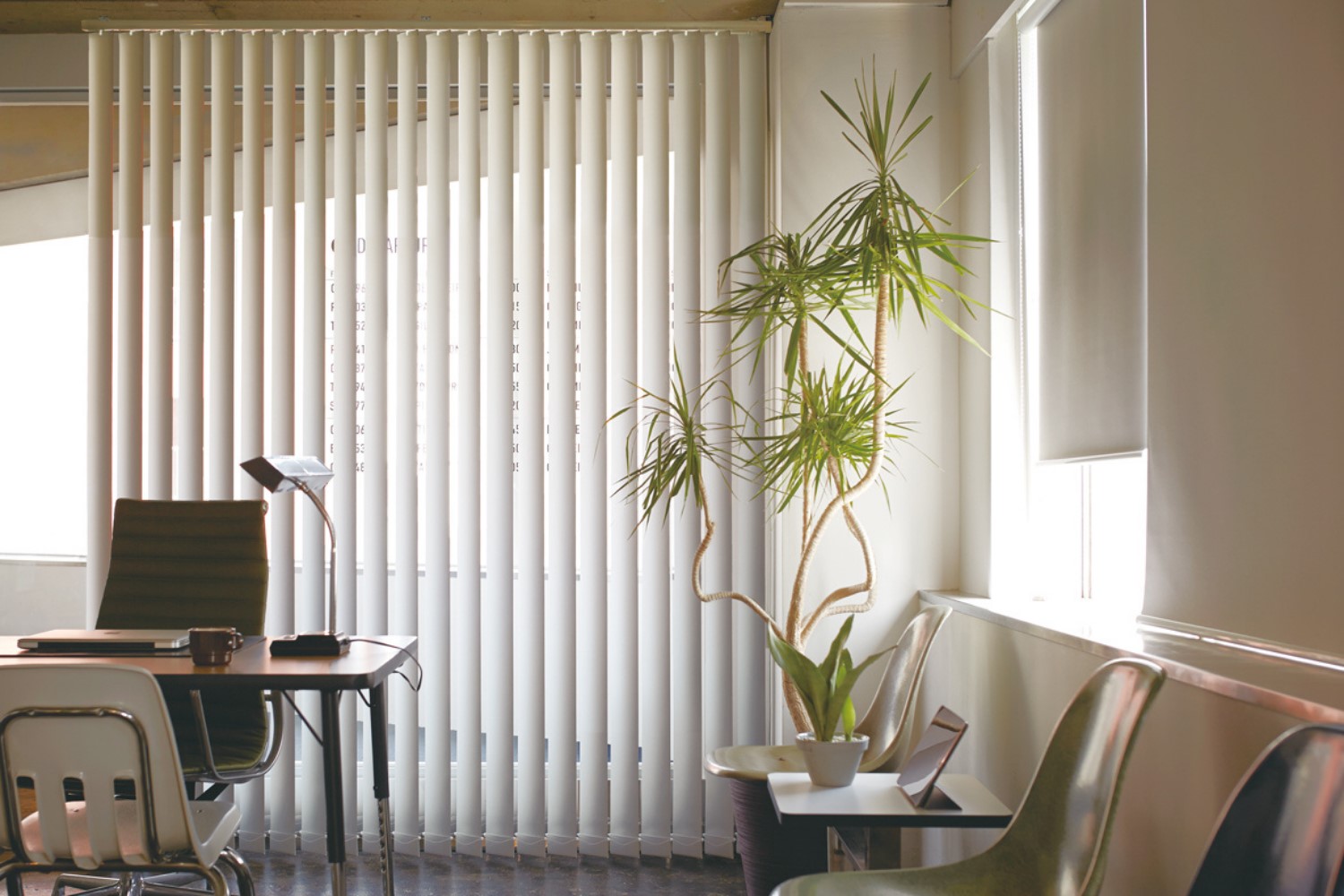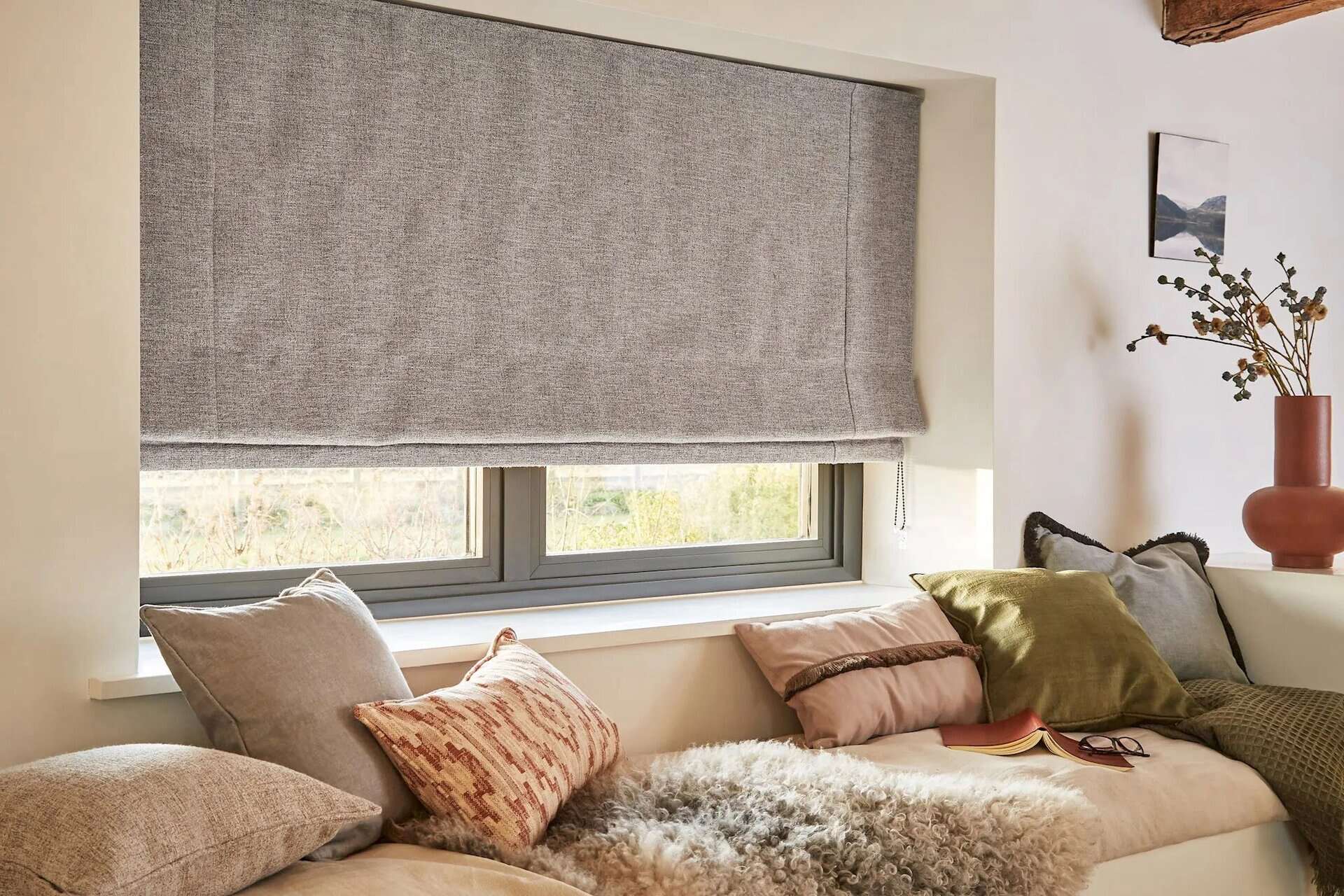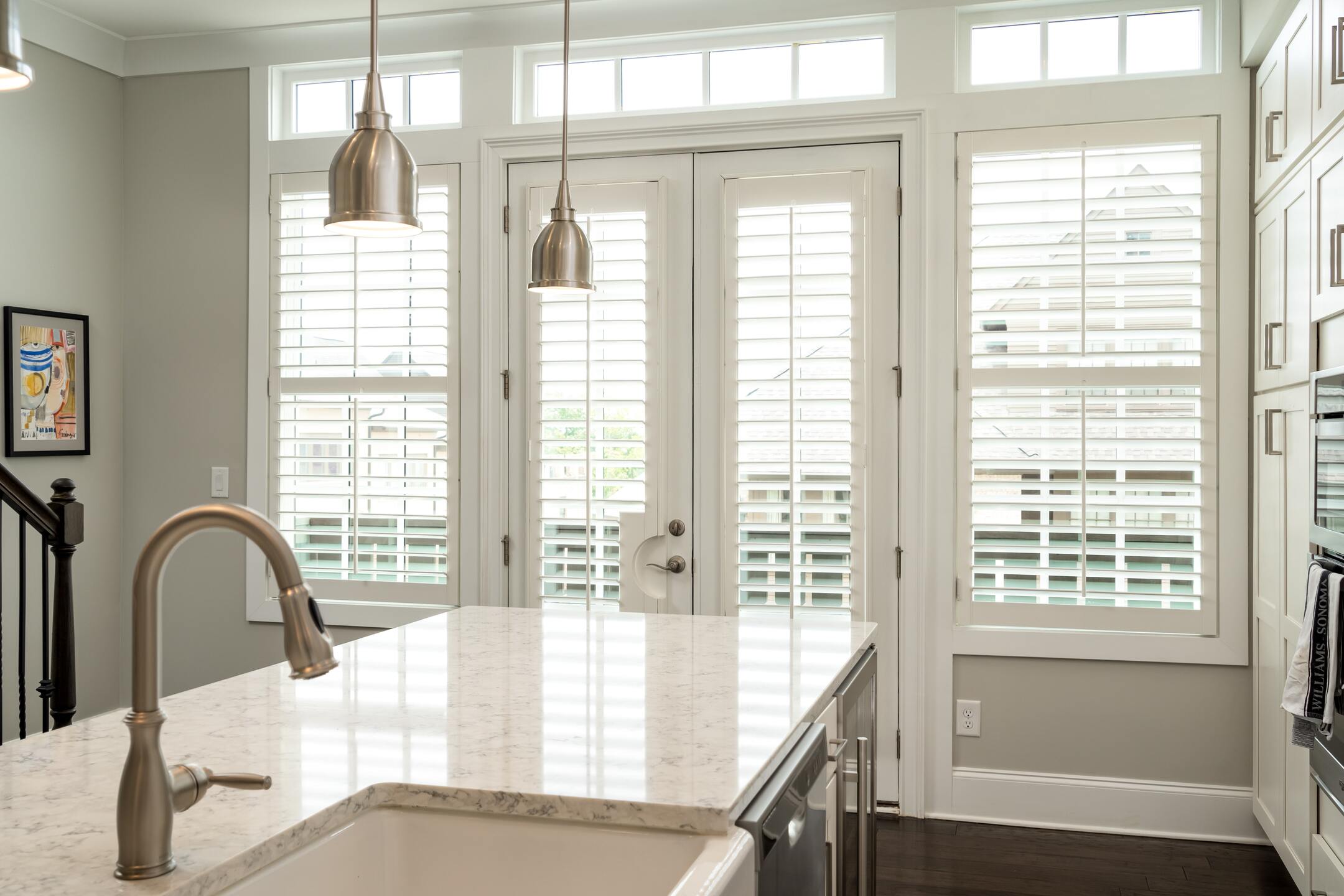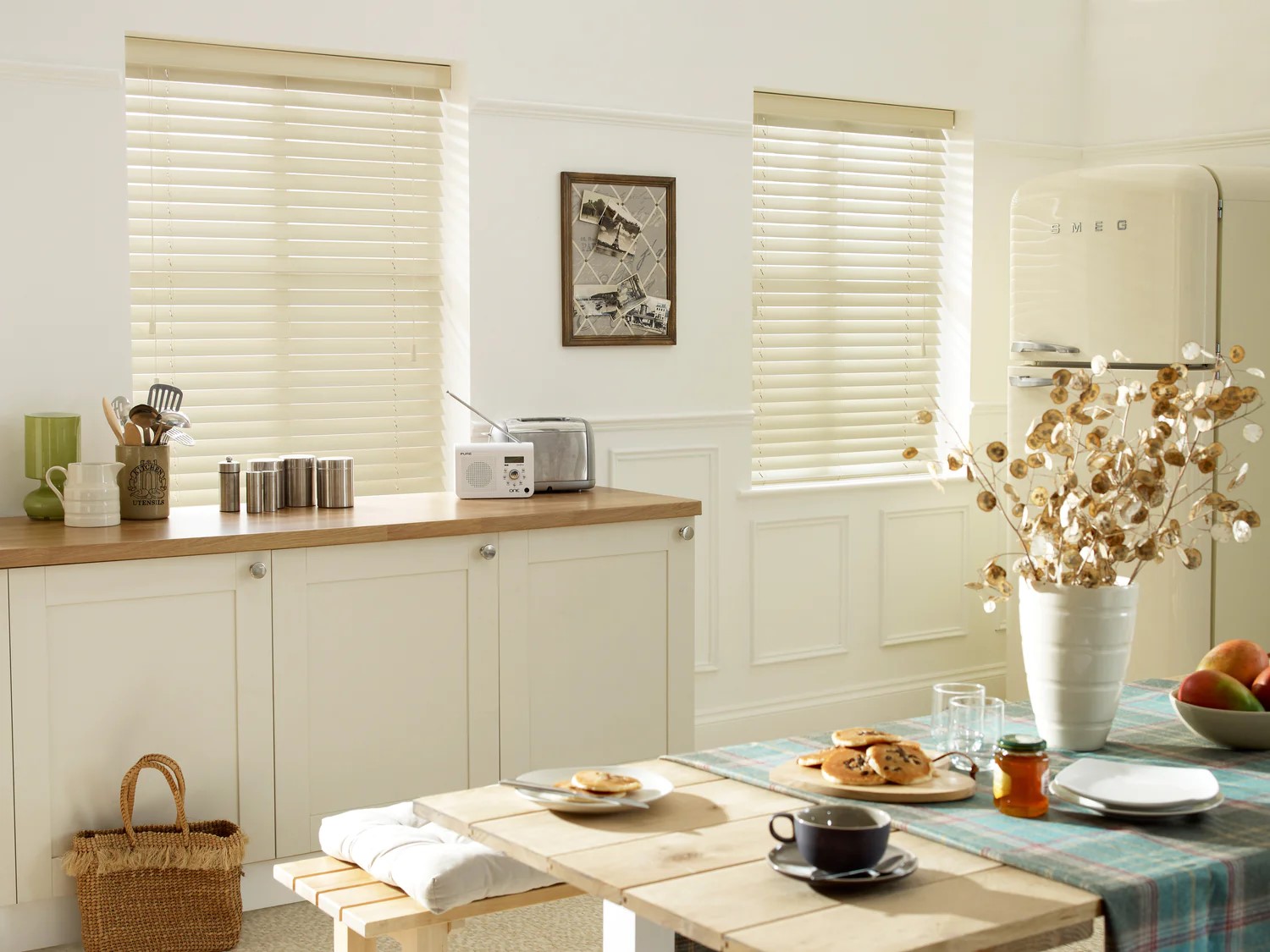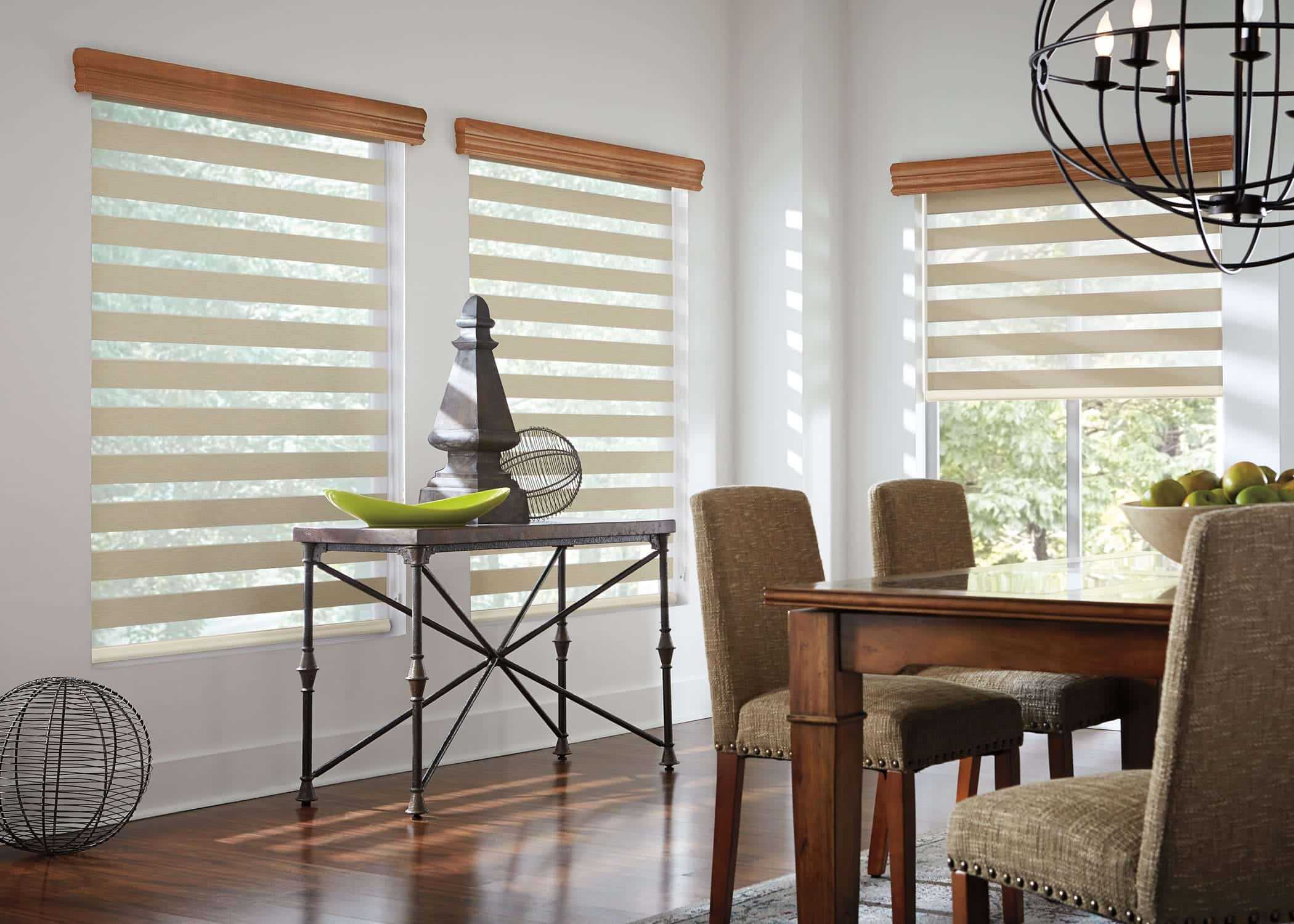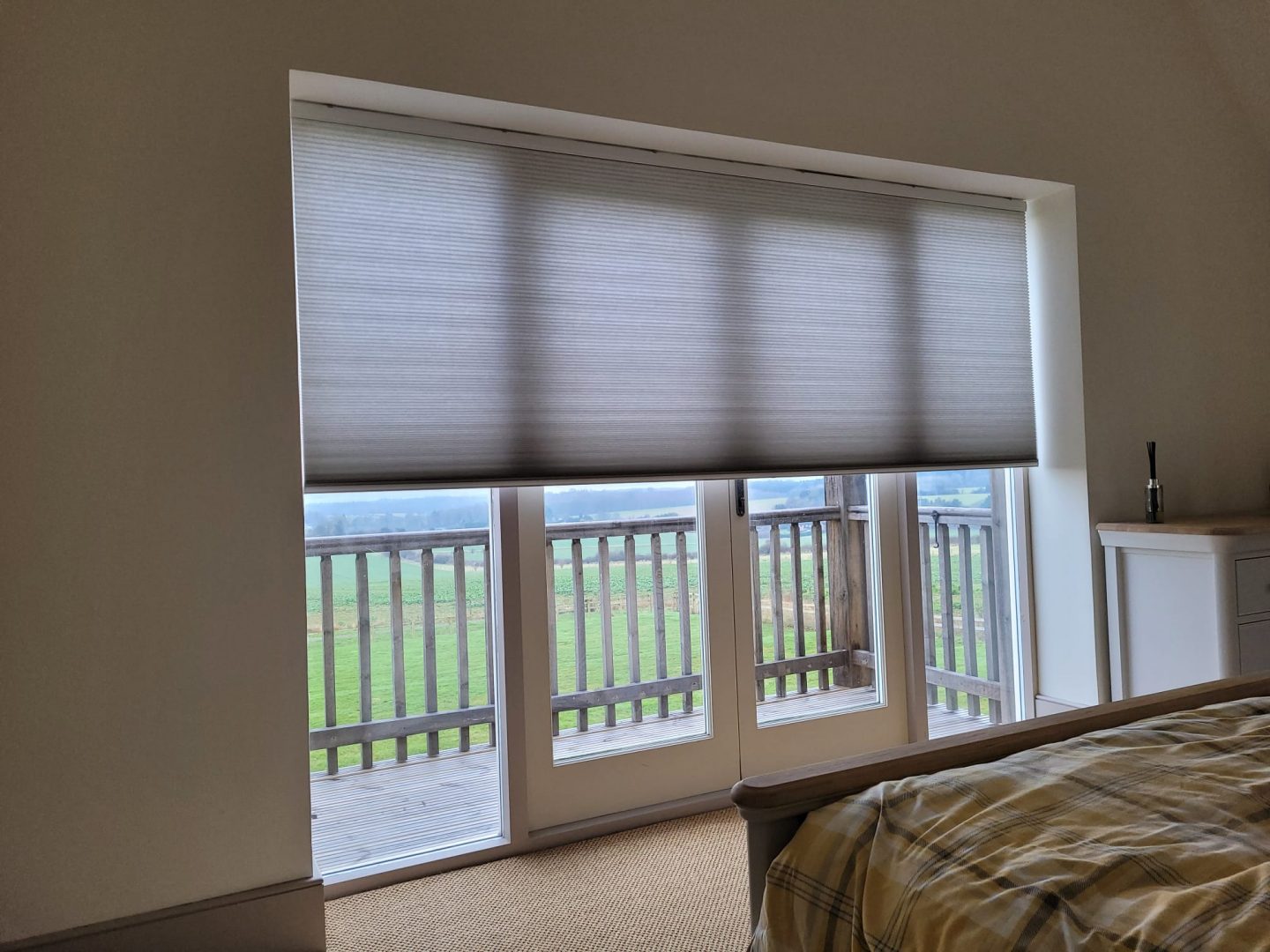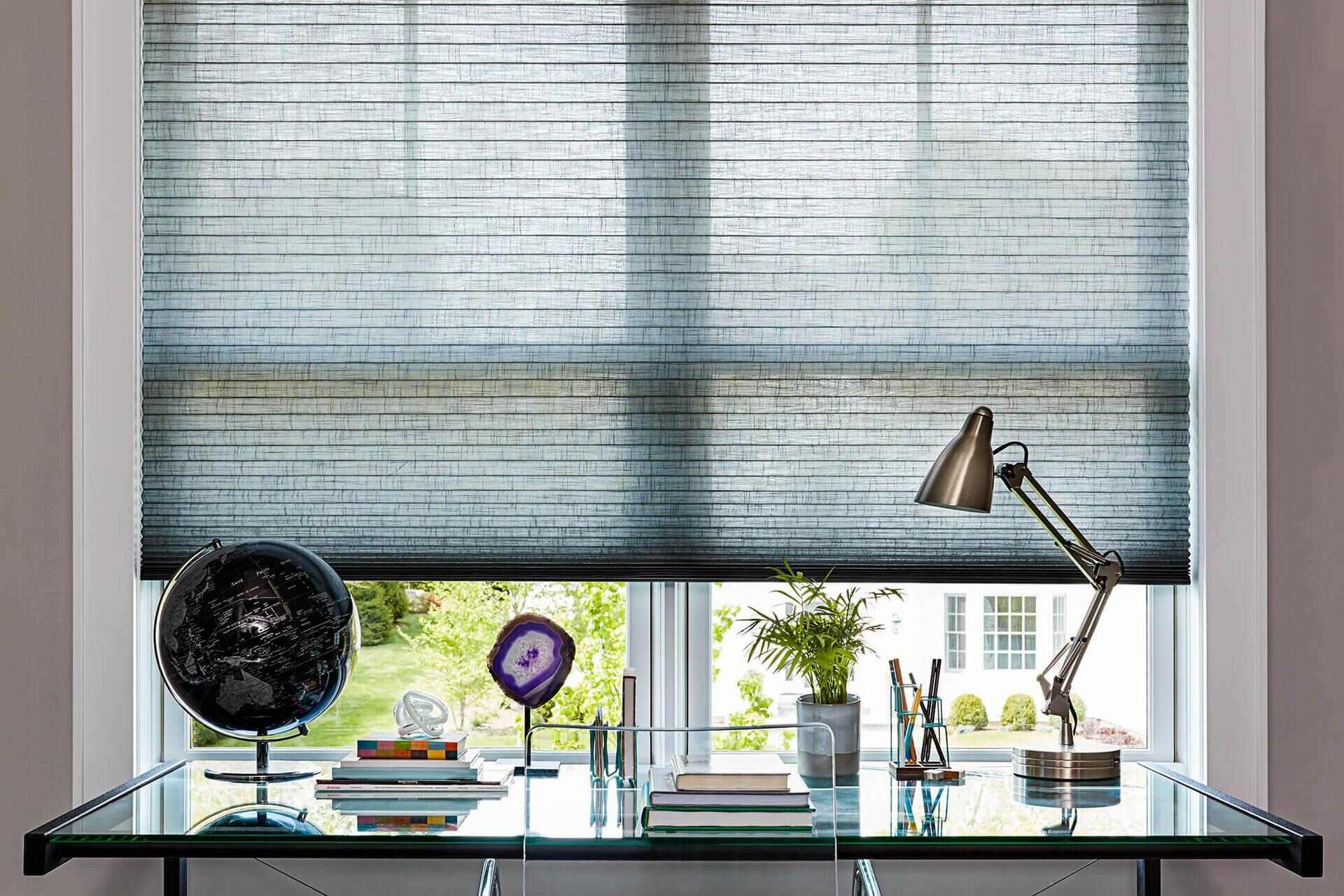

Articles
What Is Cellular Blinds
Modified: January 18, 2024
Discover the benefits and uses of cellular blinds in this informative article. Find out how these innovative window coverings can improve privacy, insulation, and energy efficiency in your home.
(Many of the links in this article redirect to a specific reviewed product. Your purchase of these products through affiliate links helps to generate commission for Storables.com, at no extra cost. Learn more)
Introduction
Cellular blinds, also known as honeycomb blinds, are a popular and versatile window covering option for both residential and commercial spaces. These blinds are designed to provide privacy, insulation, and light control while adding a touch of elegance to any room. In this article, we will explore in detail what cellular blinds are, how they work, their benefits, different types available, choosing the right one for your needs, as well as installation and maintenance tips.
With their unique honeycomb-shaped cells, cellular blinds are known for their exceptional insulating properties. The air trapped within these cells creates a barrier, helping to keep the cold air out during the winter months and the hot air out during the summer. This insulation not only enhances the comfort of your living or working space but can also reduce your energy bills by minimizing the need for artificial heating or cooling.
Cellular blinds are made from a variety of materials, including fabric, vinyl, and even eco-friendly options. They come in a range of colors, patterns, and opacities, allowing you to customize the blinds to match your interior decor and personal style. Whether you prefer a light-filtering sheer fabric to gently diffuse the sunlight or a blackout option for complete privacy and darkness, cellular blinds offer a solution to meet your specific needs.
In terms of functionality, cellular blinds are designed with a top-down, bottom-up operation, meaning that you can adjust the position of the blinds from both the top and bottom. This provides you with greater control over light exposure and privacy. Additionally, cellular blinds can be motorized for added convenience, allowing you to control them with the push of a button or through smart home automation systems.
One of the key advantages of cellular blinds is their ability to reduce outside noise. The honeycomb-shaped cells act as a sound barrier, absorbing and dampening noise, creating a quieter and more peaceful environment. This is particularly beneficial for those living in busy urban areas or near highways.
Whether you are looking to upgrade the window coverings in your home or office, cellular blinds offer an attractive and highly functional solution. In the following sections, we will delve deeper into how cellular blinds work, their benefits, different types available, as well as factors to consider when choosing the right cellular blinds for your needs.
Key Takeaways:
- Cellular blinds, also known as honeycomb blinds, offer insulation, light control, and noise reduction, enhancing comfort and energy efficiency in any space. Their customizable options cater to various needs and preferences.
- When choosing cellular blinds, consider factors such as insulation requirements, light control, privacy, window size, and budget. Proper installation and maintenance ensure longevity and optimal performance, making them a versatile and practical window covering solution.
Read more: What Are The Best Cellular Blinds
Definition of Cellular Blinds
Cellular blinds, also known as honeycomb blinds, are a type of window covering that features a unique cellular structure. This structure consists of individual cells that are designed to trap air and create a layer of insulation between the window and the interior of the room. The cells are typically made from a lightweight and durable material, such as fabric, vinyl, or a combination of both.
The name “cellular blinds” comes from the honeycomb-like appearance of the blinds, which resembles the structure of a beehive. The cells are formed by pleating the material in such a way that they create small compartments or pockets. These compartments are what give cellular blinds their distinct look and functionality.
The primary purpose of cellular blinds is to provide insulation for windows. The air trapped in the cells acts as a thermal barrier, preventing heat from escaping during the colder months and blocking out hot air during the warmer months. This insulation effect helps to regulate the temperature inside the room, making it more energy-efficient and comfortable.
Aside from their insulating properties, cellular blinds also offer light control and privacy. The design of the blinds allows them to be adjusted in various ways, including top-down, bottom-up, or a combination of both. This means you can choose to have the blinds fully opened, partially opened, or completely closed, depending on your preference and the amount of light and privacy you desire.
Cellular blinds come in a wide range of colors, patterns, and opacities to suit different decor styles and preferences. They can be customized to fit various window shapes and sizes, including standard windows, arches, skylights, and French doors. In addition, there are different operating options available, such as corded, cordless, and motorized, providing convenience and ease of use.
Overall, cellular blinds are a versatile and functional window covering solution that offers insulation, light control, privacy, and aesthetic appeal. With their unique honeycomb structure and customizable features, they have become a popular choice for homeowners and businesses looking to enhance both the comfort and style of their spaces.
How Cellular Blinds Work
Cellular blinds are designed with a honeycomb-shaped structure that provides insulation and light control. The cells in the blinds create small pockets of air, which act as a barrier against heat transfer and outside noise. Understanding how cellular blinds work can give you a better appreciation of their functionality and benefits.
When the cellular blinds are fully extended, the cells appear as open honeycomb shapes, allowing natural light to enter the room. As you adjust the blinds, either by raising or lowering them, the cells compress or expand, creating a layered effect. This adjustable structure allows you to control the amount of light entering the room, from soft diffused light to complete darkness.
One of the key features of cellular blinds is their insulating properties. The trapped air in the cells forms a layer of insulation, which helps to regulate the temperature inside the room. During the colder months, the cells help to keep the warm air inside, preventing it from escaping through the window. Similarly, in hot weather, the cells provide a barrier against the external heat, preventing it from entering and keeping the room cool.
Cellular blinds can also assist in reducing outside noise. The cellular structure absorbs sound vibrations, minimizing noise penetration and creating a quieter and more peaceful environment. This makes them a great choice for those living in noisy areas or near busy streets.
In terms of operation, cellular blinds can be adjusted in different ways to control light and privacy levels. The top-down, bottom-up feature allows you to lower the blinds from the top or raise them from the bottom, giving you the flexibility to position the blinds at your desired height. This feature is ideal for maintaining privacy while still allowing natural light to enter the room.
Cellular blinds also come in different opacities, ranging from sheer to blackout. Sheer cellular blinds allow diffused light to enter the room, creating a soft and inviting ambiance. Semi-opaque or light-filtering cellular blinds offer a balance between privacy and natural light. On the other hand, blackout cellular blinds provide maximum light blockage, making them suitable for rooms where complete darkness is desired, such as bedrooms or media rooms.
Additionally, cellular blinds can be operated manually using cords or cordless mechanisms, or they can be motorized for added convenience. Motorization allows you to control the blinds with a remote control or integrate them into a smart home automation system, providing seamless and effortless operation.
In summary, cellular blinds work by using their honeycomb structure to provide insulation, light control, and privacy. The cells trap air, creating a thermal barrier against heat transfer and helping to regulate the room’s temperature. With their adjustable design and various operating options, cellular blinds offer versatility and functionality for any space.
Benefits of Cellular Blinds
Cellular blinds, also known as honeycomb blinds, offer numerous benefits that make them a popular choice for window coverings. Whether you’re considering them for your home or office, understanding the advantages of cellular blinds can help you make an informed decision. Here are some key benefits of cellular blinds:
- Insulation: One of the primary benefits of cellular blinds is their exceptional insulation properties. The honeycomb structure creates pockets of air, which act as a thermal barrier. This insulation helps to keep the room cozy and comfortable by preventing heat loss during colder months and reducing heat gain during warmer months. By improving energy efficiency, cellular blinds can contribute to lower heating and cooling costs.
- Light Control: Cellular blinds provide excellent light control options. With their adjustable top-down, bottom-up operation, you can easily control the amount of light entering the room while still maintaining privacy. By manipulating the position of the blinds, you can diffuse natural light, allow it to enter from the top while maintaining privacy, or block out light completely for better sleep or enhanced audiovisual experiences in media rooms.
- Privacy: Cellular blinds offer a high level of privacy. The top-down operation allows you to position the blinds at various heights, preventing people outside from seeing into your space while still allowing natural light to filter through the top. This is particularly valuable for rooms on the ground floor or those facing the street.
- Noise Reduction: The honeycomb structure of cellular blinds helps reduce outside noise. The cells trap and absorb sound vibrations, creating a quieter and more peaceful environment inside. This noise reduction feature is especially advantageous for rooms located in noisy areas or near busy streets.
- UV Protection: Cellular blinds provide protection against harmful UV rays. The opaque and light-filtering cellular blind materials are designed to block out UV radiation, which can fade furniture, flooring, and artwork over time. By installing cellular blinds, you can help preserve your interior furnishings and decorations.
- Style and Aesthetics: Cellular blinds come in a wide range of colors, patterns, and styles to complement any interior decor. Whether your style is modern, traditional, or eclectic, you can find cellular blinds to suit your taste. The sleek and clean design of cellular blinds adds a touch of sophistication and elegance to any room.
- Ease of Operation: Cellular blinds can be operated manually using cords or cordless systems, or they can be motorized for added convenience. Motorized cellular blinds allow you to control them with the push of a button or through smart home automation systems, providing ease of use and seamless integration with your lifestyle.
- Easy Maintenance: Cellular blinds are easy to clean and maintain. Regular dusting or light vacuuming with a soft brush attachment can keep them looking clean and fresh. Additionally, many cellular blind materials are resistant to stains and moisture, making them suitable for humid environments like kitchens and bathrooms.
In summary, cellular blinds offer a range of benefits including insulation, light control, privacy, noise reduction, UV protection, style, ease of operation, and easy maintenance. Their versatility, functionality, and aesthetic appeal make them a popular choice for enhancing both the comfort and beauty of any space.
Cellular blinds, also known as honeycomb blinds, are a type of window covering that are designed to provide insulation and energy efficiency. The unique cellular design traps air, helping to keep the room cool in the summer and warm in the winter.
Different Types of Cellular Blinds
Cellular blinds, also known as honeycomb blinds, come in various types and styles, offering versatility and customization options to suit different preferences and window types. Here are some of the different types of cellular blinds available:
- Single Cell: Single cell cellular blinds, as the name suggests, feature a single layer of cells. They are lightweight, making them ideal for smaller windows and areas where space is limited.
- Double Cell: Double cell cellular blinds have two layers of cells, providing enhanced insulation and energy efficiency. The double layer of cells adds an extra barrier against heat transfer, making them ideal for larger windows or areas that require additional insulation.
- Triple Cell: Triple cell cellular blinds offer the highest level of insulation and energy efficiency. With three layers of cells, they provide maximum thermal insulation, making them a great choice for rooms that experience extreme temperature variations or for those seeking the highest level of energy savings.
- Light-Filtering: Light-filtering cellular blinds allow soft and diffused light to enter the room while still maintaining privacy. These blinds are made from fabric with small perforations or sheer materials that gently filter light, creating a pleasant ambiance in the space.
- Semi-Opaque: Semi-opaque cellular blinds strike a balance between light-filtering and room-darkening options. They provide privacy by blocking the view from the outside while allowing some natural light to filter through. These blinds are a popular choice for living rooms, dining rooms, and home offices.
- Room-Darkening: Room-darkening cellular blinds offer maximum light blockage, making them perfect for bedrooms, nurseries, or media rooms where complete darkness is desired. These blinds have an opaque fabric that restricts light from entering the room, providing optimal privacy and light control.
- Blackout: Blackout cellular blinds provide the highest level of light blockage and privacy. They feature special blackout fabrics that completely prevent light from entering the room. These blinds are an excellent choice for people who work night shifts, have trouble sleeping with any light present, or for rooms that require complete darkness, such as home theaters.
- Top-Down, Bottom-Up: This type of cellular blind offers versatility in light control and privacy. It allows you to raise the blinds from the bottom or lower them from the top, providing flexibility in positioning. This feature enables you to enjoy natural light while maintaining privacy or to create a partially opened view when desired.
- Motorized: Motorized cellular blinds offer convenience and ease of operation. With motorization, you can control the blinds with a remote control or integrate them into a smart home automation system. This allows you to open, close, or adjust the blinds with the touch of a button or schedule them to operate automatically at specific times, even when you’re away from home.
When choosing the right type of cellular blinds for your needs, consider factors such as insulation requirements, desired light control, privacy preferences, and style preferences. It’s also worth considering the window size and location to ensure a proper fit and functionality.
With the wide variety of cellular blind types available, you can find the perfect option to enhance the functionality and aesthetics of any room or space.
Read more: How To Restring Cellular Blinds
Choosing the Right Cellular Blinds for Your Needs
When selecting cellular blinds for your windows, it’s important to consider your specific needs and preferences to ensure you choose the right type and style. Here are some factors to consider when making your decision:
- Insulation Requirements: Assess the insulation needs of your space. If you live in an area with harsh winters or hot summers, double or triple cell cellular blinds can provide enhanced insulation. For moderate climate regions, single cell cellular blinds may be sufficient.
- Light Control: Consider the level of light control you prefer. Light-filtering cellular blinds allow gentle, diffused light to enter, creating a soft ambiance. Room-darkening or blackout options provide maximum light blockage, which is ideal for bedrooms or media rooms. Semi-opaque cellular blinds strike a balance between privacy and natural light.
- Privacy: Evaluate the privacy requirements of your space. If privacy is a priority, choose cellular blinds that offer top-down, bottom-up functionality. This option allows you to adjust the blinds to cover the lower portion of the window while maintaining an open view at the top.
- Window Size and Shape: Consider the size and shape of your windows. Cellular blinds can be customized to fit various window types, including standard, arched, or skylight windows. Measure your windows accurately to ensure a proper fit and seamless operation of the blinds.
- Style and Aesthetics: Consider the overall style and aesthetics of the room. Cellular blinds come in a variety of colors, patterns, and fabric options. Choose a style that complements your interior decor and personal taste.
- Budget: Determine your budget for cellular blinds. The price of cellular blinds can vary depending on factors such as size, material, and operating system. It’s essential to establish a budget and find blinds within that range without compromising quality.
- Operating System: Decide on the operating system that suits your needs. Cellular blinds can be operated manually with cords or cordless mechanisms, or motorized for added convenience. Motorized blinds are ideal for hard-to-reach windows or for those who prefer the ease of remote or automated control.
- Quality and Durability: Consider the quality and durability of the blinds. Look for reputable brands that offer warranties and have a track record of manufacturing high-quality products. Go for materials that are known for their durability and resistance to fading, stains, and moisture.
It’s also a good idea to consult with a professional or visit a showroom to see and feel the different types of cellular blinds firsthand. This allows you to test the light-filtering, privacy, and insulation capabilities of the blinds to ensure they meet your specific requirements.
By considering these factors, you can make an informed decision when choosing cellular blinds that will enhance the functionality, style, and comfort of your space.
Installation and Maintenance of Cellular Blinds
Installing and maintaining cellular blinds is a relatively simple process. By following the manufacturer’s instructions and implementing proper care, you can ensure the longevity and optimal performance of your blinds. Here are some guidelines for installation and maintenance:
Installation:
- Measurements: Measure your windows accurately to ensure a proper fit for your cellular blinds. Use a metal measuring tape to measure the width and height of the window frame, taking into account any obstructions such as handles or locks. Consult the manufacturer’s instructions for specific measurement guidelines.
- Mounting Options: Determine the mounting option that suits your needs. Cellular blinds can be installed inside the window frame (inside mount) or outside the window frame (outside mount). The mounting option you choose may depend on factors like window depth, architectural features, or personal preference.
- Mounting Brackets: Install the mounting brackets using the appropriate hardware provided with the blinds. Ensure the brackets are securely attached to the window frame or wall, following the manufacturer’s instructions. Use a level to ensure the brackets are aligned and the blinds will hang evenly.
- Attaching the Blinds: Attach the cellular blinds to the mounting brackets. Slide the headrail or top of the blinds into the brackets, making sure they click into place. Check that the blinds are level and adjust if necessary.
- Operating Mechanism: Test the operating mechanism (cords, cordless, or motorization) to ensure the blinds are functioning properly. Follow the manufacturer’s instructions for any additional steps required to secure or adjust the operating mechanism.
Maintenance:
- Dusting and Cleaning: Regularly dust your cellular blinds with a soft cloth, feather duster, or vacuum cleaner attachment to remove any surface dust or debris. For more thorough cleaning, follow the manufacturer’s instructions for your specific cellular blind material.
- Spot Cleaning: If there are any stains or spills on the blinds, spot clean with a mild detergent and warm water solution. Gently blot the area with a clean cloth or sponge, being careful not to oversaturate the fabric. Allow the blinds to air dry completely before raising or lowering them.
- Professional Cleaning: For deep cleaning or stubborn stains, consider hiring a professional blind cleaning service. They have the expertise and specialized equipment to clean your cellular blinds effectively and safely.
- Preventing Damage: Avoid excessive force or pulling on the cords or fabric of cellular blinds. This can lead to damage or improper functioning. Handle the blinds with care when raising, lowering, or adjusting them.
- Protecting from Sun Damage: To extend the lifespan of your cellular blinds, consider using window film or UV-blocking window treatments to protect them from direct sunlight. Excessive exposure to UV rays can cause fading and deterioration of the fabric over time.
Remember to consult the manufacturer’s instructions for any specific guidelines or recommendations for installation and maintenance. By properly installing and maintaining your cellular blinds, you can enjoy their functionality, beauty, and energy-saving benefits for years to come.
Conclusion
Cellular blinds, also known as honeycomb blinds, are a versatile and stylish window covering option that offers a range of benefits for both residential and commercial spaces. With their unique honeycomb structure, cellular blinds provide insulation, light control, privacy, and noise reduction, enhancing the comfort and functionality of any room.
The insulating properties of cellular blinds help to regulate the temperature inside the room, reducing energy consumption and lowering heating and cooling costs. The adjustable top-down, bottom-up operation allows for precise light control while maintaining privacy. Cellular blinds also offer options like light-filtering, room-darkening, and blackout materials, ensuring there is a perfect fit for every space.
One of the key advantages of cellular blinds is their ability to reduce outside noise, creating a more peaceful environment. These blinds also provide protection against harmful UV rays, preventing furniture and flooring from fading over time. Additionally, the wide range of colors, patterns, and styles available allows you to customize the blinds to match your interior decor and personal style.
When choosing cellular blinds, considerations such as insulation requirements, light control, privacy, window size, and budget should be taken into account. Whether you opt for single cell, double cell, or triple cell blinds, the right choice will depend on your specific needs and preferences. It’s also important to consider the quality, durability, and operating system of the blinds to ensure longevity and ease of use.
Installing and maintaining cellular blinds is a straightforward process, but it’s essential to follow the manufacturer’s instructions for proper installation and care. Regular dusting and occasional spot cleaning can keep the blinds looking fresh and prevent any damage, while professional cleaning services can be used for deeper cleaning.
In conclusion, cellular blinds offer a winning combination of functionality, style, and energy efficiency. With their insulating properties, light control options, privacy features, and aesthetic appeal, cellular blinds are an excellent choice for anyone looking to enhance the comfort and beauty of their space.
Frequently Asked Questions about What Is Cellular Blinds
Was this page helpful?
At Storables.com, we guarantee accurate and reliable information. Our content, validated by Expert Board Contributors, is crafted following stringent Editorial Policies. We're committed to providing you with well-researched, expert-backed insights for all your informational needs.
